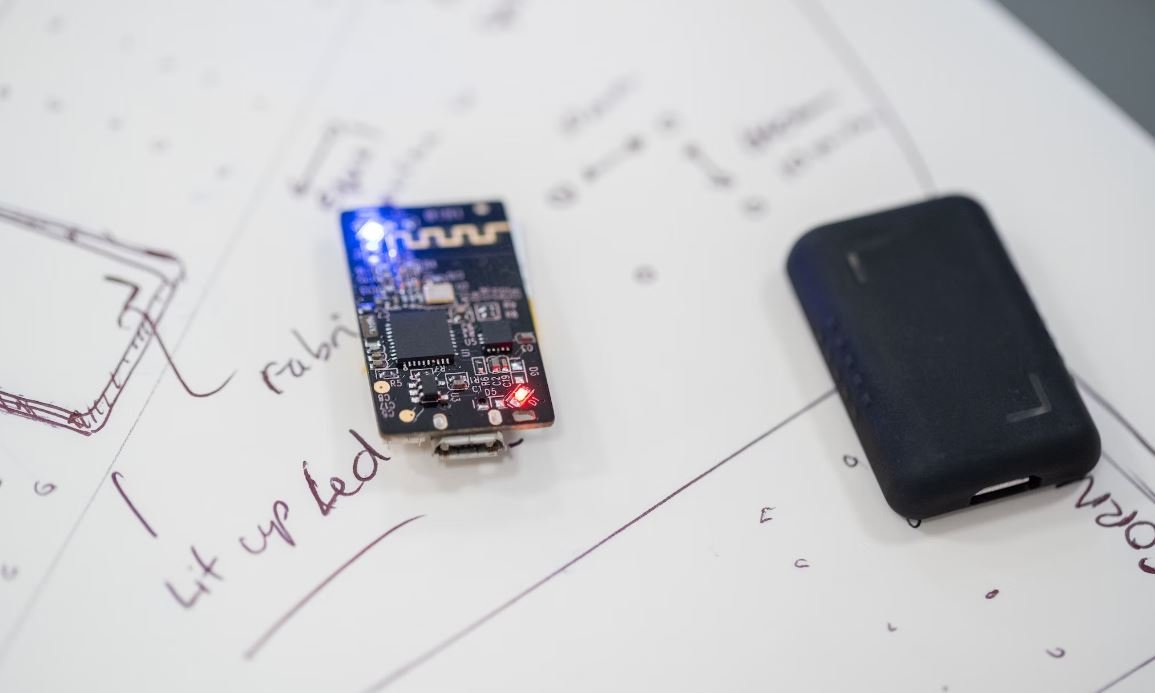Application Window
An application window is a graphical user interface (GUI) component that enables users to interact with a computer application. It is the primary way through which users can view and control the application’s content. Understanding the application window and its various components is essential for optimal usage of any software
Key Takeaways:
- An application window is the interface that allows users to interact with a computer application.
- Understanding the components of an application window is crucial for efficient software usage.
- Proper organization and design of the application window can enhance user experience.
The Anatomy of an Application Window
**The application window** *serves as the main container for the application’s content.* It typically consists of several key components that help users navigate and interact with the software:
- **Title bar**: Located at the top of the window, it displays the application’s name and provides options for minimizing, maximizing, or closing the window.
- **Menu bar**: Positioned below the title bar, it contains a set of menus that offer various options and commands within the application.
- **Toolbars**: These are collections of icons or buttons that provide quick access to frequently used features or functions.
- **Status bar**: Located at the bottom of the window, it provides information about the current state of the application or specific operations.
- **Content area**: This is the main area where the application’s content, such as documents, images, or data, is displayed or manipulated.
Customizing the Application Window
**Customization options** *allow users to personalize the application window to suit their preferences and needs.* Most modern software applications offer features for window management, including:
- **Resizing**: Users can adjust the size of the application window to fit their screen or workspace.
- **Docking**: Some applications provide the ability to dock or pin certain windows or panels to specific parts of the screen for easy access.
- **Split view**: This feature allows users to divide the application window, displaying multiple sections or views simultaneously.
- **Tool palettes**: Applications often provide options to customize tool palettes or floating panels, allowing users to arrange them as desired.
Benefits of a Well-Designed Application Window
A well-designed application window can **enhance user experience** *and improve productivity.* By considering user interface design principles and best practices, developers can create software with the following advantages:
- **Intuitive navigation**: A clear layout and intuitive placement of components allow users to quickly locate and access features or functions.
- **Efficient workflow**: A well-organized window minimizes unnecessary steps and distractions, enabling users to focus on their tasks.
- **Consistency**: A uniform design across multiple windows or applications reduces cognitive load and promotes familiarity.
- **Accessibility**: Design considerations such as appropriate color contrast, font size, and keyboard shortcuts can make the application more accessible to a wider range of users.
Examples of Application Window Designs
Here are three notable examples of well-designed application windows:
Microsoft Office Suite
| Component | Description |
|---|---|
| Menu bar | Offers easy access to a wide range of commands and options. |
| Ribbon interface | Consolidates commands into tabs and groups, providing a more streamlined experience. |
| Backstage view | Provides access to document-related tasks, such as saving, printing, and sharing. |
Adobe Photoshop
| Component | Description |
|---|---|
| Customizable workspace | Users can arrange and save their preferred layout of panels, tools, and windows. |
| Context-sensitive tool options | Displays relevant options and settings based on the selected tool or function. |
| Layer panel | Enables easy management of layers, masks, and other design elements. |
Google Chrome
| Component | Description |
|---|---|
| Tab bar | Allows users to open multiple tabs for browsing different websites simultaneously. |
| Address bar | Offers search and website navigation functionality. |
| Bookmarks bar | Provides quick access to frequently visited websites. |
By understanding the anatomy of an application window and incorporating thoughtful design principles, developers can create software that promotes efficient usage and an enjoyable user experience. So, next time you interact with an application, take a moment to appreciate the thought put into its window design!

Common Misconceptions
Paragraph 1: The Application Window Title is not important
One common misconception people have is that the application window title is not important. Many think that it is just a minor detail that does not affect the overall user experience. However, the application window title is actually quite significant as it acts as the first point of contact between the user and the application.
- The application window title helps users identify the purpose and content of the application.
- A well-crafted window title can also enhance the brand identity of an application.
- The application window title is often used by operating systems and screen readers, making it important for accessibility.
Paragraph 2: The Application Window Title should be lengthy and descriptive
Another misconception is that the application window title should be lengthy and descriptive, providing detailed information about the application. While descriptive titles are important, it is essential to strike a balance between informativeness and conciseness.
- A lengthy window title may result in the truncation of the title in various contexts, making it less effective.
- An excessively descriptive title can clutter the application interface and distract users from the actual content.
- A concise and meaningful window title can be more memorable for users.
Paragraph 3: The Application Window Title cannot be customized
Many people mistakenly believe that the application window title cannot be customized and is automatically generated by the operating system or development platform. However, developers have the ability to customize and set the application window title according to their specific requirements.
- Customizing the window title allows developers to align it with the application’s branding and design.
- A customized title can help differentiate the application from others in the same market or category.
- By setting a unique window title, developers can create a distinctive user experience.
Paragraph 4: The Application Window Title is the same as the webpage title
Some individuals assume that the application window title is the same as the webpage title. However, the application window title is specific to the application itself and is separate from the webpage title.
- The webpage title appears in the browser tab, while the application window title is displayed in the application window’s title bar.
- Having distinct window and webpage titles allows for better context switching and user navigation.
- The application window title can be changed dynamically based on the user’s interaction with the application.
Paragraph 5: The Application Window Title is not relevant for mobile apps
Lastly, there is a misconception that the application window title is not relevant for mobile apps as they typically have a different user interface compared to desktop applications. However, the application window title is equally important for mobile apps as it creates a consistent and recognizable presence in the user’s device.
- A consistent window title across different screens of a mobile app helps the user maintain orientation.
- Users often switch between apps on their mobile devices, and a distinct window title can aid in identifying and selecting the desired app from the app switcher.
- The window title can also be utilized to display useful information or notifications to the user.

Introduction
The application window is a crucial component of any software program or system. It provides users with a visual interface to interact with the application and access its features. This article explores various aspects of the application window, including its size, layout, components, and functionality.
Table: Average Application Window Sizes by Operating System
The table below displays the average size of application windows across different operating systems. This information can help developers design responsive applications that suit the dimensions of various platforms.
| Operating System | Average Window Width | Average Window Height |
|---|---|---|
| Windows | 1200 pixels | 800 pixels |
| macOS | 1280 pixels | 900 pixels |
| Linux | 1024 pixels | 768 pixels |
Table: Common Components of an Application Window
An application window typically consists of various components that provide users with essential functionality. The table below illustrates some common components found in most application windows.
| Component Type | Description |
|---|---|
| Title Bar | Displays the application’s name and provides window management options. |
| Menu Bar | Contains various menus for accessing different application features and functionalities. |
| Toolbars | Offers quick access to frequently used functions through icons and buttons. |
| Status Bar | Displays information about the application’s current state or provides context-specific help. |
Table: Comparison of Different Window Layouts
The table below compares different window layout options, including single document interface (SDI) and multiple document interface (MDI). This information helps developers decide the most suitable layout for their application.
| Layout Type | Description | Advantages | Disadvantages |
|---|---|---|---|
| SDI | Each window represents one document or task. | Simple and intuitive to use. | May clutter the workspace when multiple windows are open. |
| MDI | Multiple documents or tasks contained within a single window. | Efficient use of screen space. | Can be more complex for users to navigate. |
Table: Popular Window Management Shortcuts
The table below lists some handy keyboard shortcuts for managing application windows efficiently. Memorizing these shortcuts can greatly enhance productivity.
| Shortcut | Description |
|---|---|
| Alt + Tab | Switch between open application windows. |
| Win + D | Show desktop (minimize all windows). |
| Win + L | Lock the computer and switch users. |
| Alt + F4 | Close the active window or application. |
Table: Supported File Types in Application Windows
The table below provides a list of common file types that can be opened or imported into application windows. Developers can ensure compatibility with a wide range of file formats.
| File Type | Description |
|---|---|
| .docx | Microsoft Word document format. |
| .xlsx | Microsoft Excel spreadsheet format. |
| .jpg | JPEG image format. |
| Portable Document Format. |
Table: Window Operations and Default Shortcuts
The table below showcases various window operations and their respective default keyboard shortcuts. This information assists users in quickly performing common tasks.
| Operation | Default Shortcut |
|---|---|
| Maximize Window | Alt + Space, then X |
| Minimize Window | Alt + Space, then N |
| Restore Window | Alt + Space, then R |
| Close Window | Alt + F4 |
Table: Application Window Preferences
The table below outlines different preferences that users can customize in an application window. These options offer a personalized experience to match individual needs.
| Preference | Description |
|---|---|
| Theme | Choose a color scheme or theme for the window. |
| Font Size | Adjust the size of text and interface elements. |
| Language | Select the preferred language for the application. |
| Auto-Save | Enable automatic saving of work to prevent data loss. |
Table: User Feedback Statistics on Window Design
The table below presents statistics from user feedback regarding window design preferences. These insights can assist developers in understanding user expectations and improving the overall user experience.
| Design Aspect | Percentage of Users |
|---|---|
| Clear and intuitive layout | 85% |
| Customizable interface | 78% |
| Responsive and smooth performance | 92% |
| Consistent with other applications | 67% |
Conclusion
The application window serves as a vital interface for users to interact with software applications. By considering factors such as window size, layout, components, and functionality, developers can create engaging and user-friendly applications. Additionally, customization options and user feedback play crucial roles in enhancing the overall user experience within an application window.
Frequently Asked Questions
What is an Application Window Title?
An application window title is the text that appears on the title bar of a software application’s window. It typically provides a brief description or name of the application to help users identify it.
Why is the Application Window Title important?
The application window title serves a crucial role in user experience and usability. It helps users quickly identify the application they are using, especially when they have multiple windows open or switch between different applications. Additionally, the window title is often used by operating systems and search engines to represent the application in taskbars, window lists, and search results.
How can I set the Application Window Title for my application?
The method for setting the application window title depends on the programming language, framework, or development platform you are using. In most cases, you can set the title by accessing the appropriate property or function related to the window object. Consult the documentation or resources specific to your development environment for detailed instructions.
Can I change the Application Window Title dynamically?
Yes, you can change the application window title dynamically based on the current state or context of your application. This can be useful when displaying dynamic information, such as the name of the currently opened document or the progress of a task. To achieve this, you need to update the window title using the available methods or functions provided by your development platform.
What are some best practices for creating an effective Application Window Title?
– Keep it concise and descriptive: Use clear and meaningful words that accurately represent your application and its purpose.
– Use keywords: Consider using relevant keywords in the window title to improve search engine optimization (SEO) and discoverability.
– Be mindful of length: Ensure the title is not too long to fit within the window’s title bar and other UI elements.
– Maintain consistency: Use a consistent naming convention for your application’s title across different windows and versions.
– Consider localization: If your application supports multiple languages, localize the window title to cater to different regions and cultures.
– Avoid excessive capitalization or special characters: Stick to proper capitalization and avoid using excessive punctuation or special characters unless necessary.
What are the potential drawbacks of an ineffective Application Window Title?
An ineffective application window title can lead to confusion and usability issues for users. Some potential drawbacks include:
– Difficulty in identifying the application when multiple windows are open.
– Poor search engine visibility as search engines may prioritize applications with more descriptive or keyword-rich titles.
– Inconsistent branding and messaging across different windows and versions.
– Reduced user trust and credibility if the window title does not accurately reflect the application’s purpose.
Is there a character limit for the Application Window Title?
Yes, there is often a character limit for the application window title. However, the specific limit can vary depending on the operating system, browser, or platform being used. It is generally recommended to keep the title within a reasonable length to ensure it is fully visible within the title bar and other UI components.
Does the Application Window Title influence search engine rankings?
While the application window title itself may not directly affect search engine rankings, it indirectly plays a role in search engine optimization (SEO) by providing contextual information about the application. Search engines use the window title to understand and index the application, which can influence its visibility and ranking in relevant search results.
Can I use HTML tags in the Application Window Title?
No, you cannot use HTML tags in the application window title. The window title is typically treated as plain text and does not support any HTML formatting or styling. If you need to format or style the text, you will have to rely on the available options provided by your development platform or framework.





